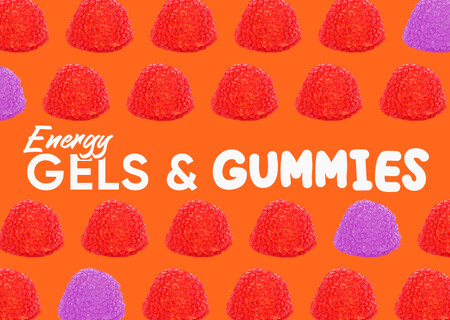Blog

Energy Gels And Gummies
During prolonged exercise, the body relies on both carbohydrates and fat stores to fuel the body over time and ensure that the muscles and organs function optimally. These fuel sources come from both the food we eat immediately before and stores of carbohydrates (glycogen) in muscles and fat. While fat stores are widely available, it takes longer to break down making carbohydrates the more readily available energy source for prolonged exercise.
During steady-state exercise, glycogen stores will be depleted after 90 minutes of continuous exercise. To continue exercising after this time, we need to refuel the muscles and hydrate. Carbohydrate-based food sources are the ideal way to do this, however, if exercise is continuous, easy to digest and consume liquids and gels are often the go-to option.
Endurance athletes often use energy gels and gummies to continuously fuel the muscles during both training and on competition days. Through the blood, the gel provides the active muscles and organs with a source of simple sugar and a short-lived boost of energy. Gels often include other ingredients to help boost performance such as caffeine, electrolytes, and sometimes fruit flavourings which provide antioxidants helping to remove waste products. The effects of an energy gel lasts (on average) around 45 minutes, after which time another gel can be consumed if the exercise is continuing. It is important to note that having multiple sachets within this time can cause an unwanted spike in blood sugar and have a negative impact when it comes to performance output.
Much like energy gels, energy gummies provide the same or similar simple sugars and carbohydrates for fuelling during endurance training and endurance events. The difference is merely in texture as for some people, digestive distress can be experienced while consuming the gels. It is advised that a few (2-3) sweets are consumed before and every 35- 45 minutes after of prolonged exercise.
Swimming, energy gels, and gummies would only be advisable for those doing steady-state prolonged exercise - 60 minutes or more of continuous swimming with no rest periods.
For use at competitions, prolonged exercise does not occur. The longest period of exercise is typically a 20-minute pool warm-up where the definition of exercise would be classified as interval training (reps on rest). While replenishing energy stores is an integral part of training and competition performance, whole foods and planned meals are always the best approach. Gels and gummies are a shortcut and one that is portrayed as ‘cool’ but many athletes are also consuming carbohydrates in other forms (biscuits, dates, cereal bars, bananas) and therefore do not need extra calories to add to their carbohydrate stores. Furthermore, energy gels have not been designed or researched for use by children, and disclaimers on websites specify they are not advised for anyone under 16.
For swimmers on competition days, it is crucial that a balanced dinner is consumed the night before racing and a healthy breakfast is eaten in the morning before racing. Most swimmers are already in the habit of hydrating and snacking during competitions and in terms of energy stores to fuel a race, this is the best and most sustainable approach, especially for those athletes with multiple events per session.
If you require nutritional support and guidance, don't hesitate to get in touch with Tiffany - [email protected] at The Edge HPL. Her expert knowledge in nutrition specifically for swimmers is unparalleled and we at Hamilton trust Tiffany to educate our swimmers and parents for the future.

